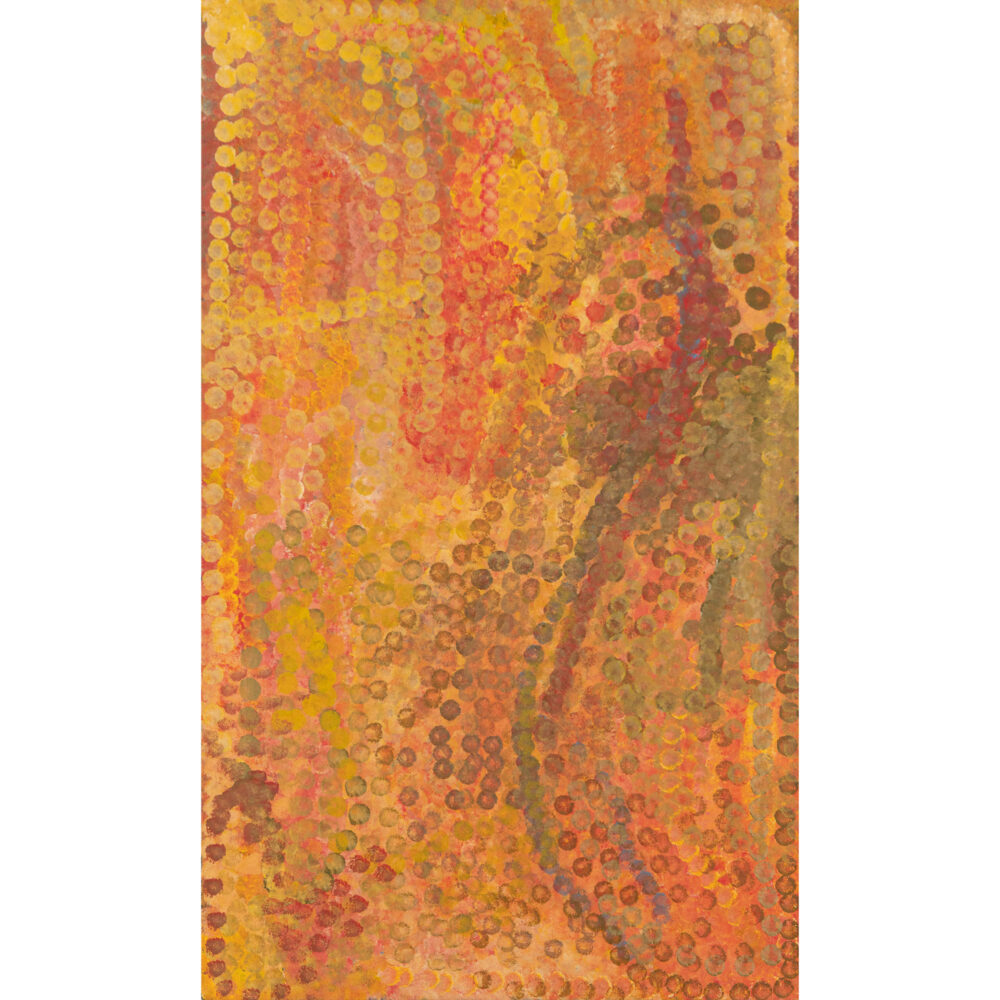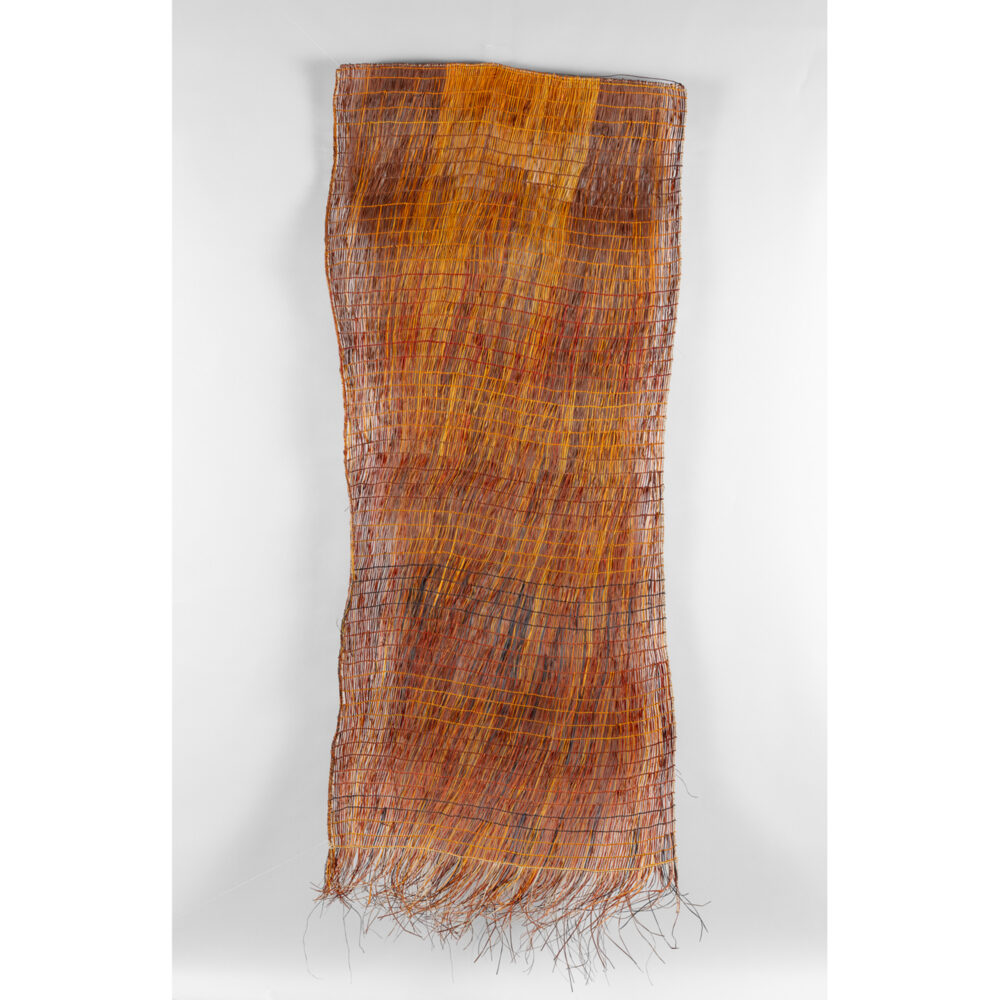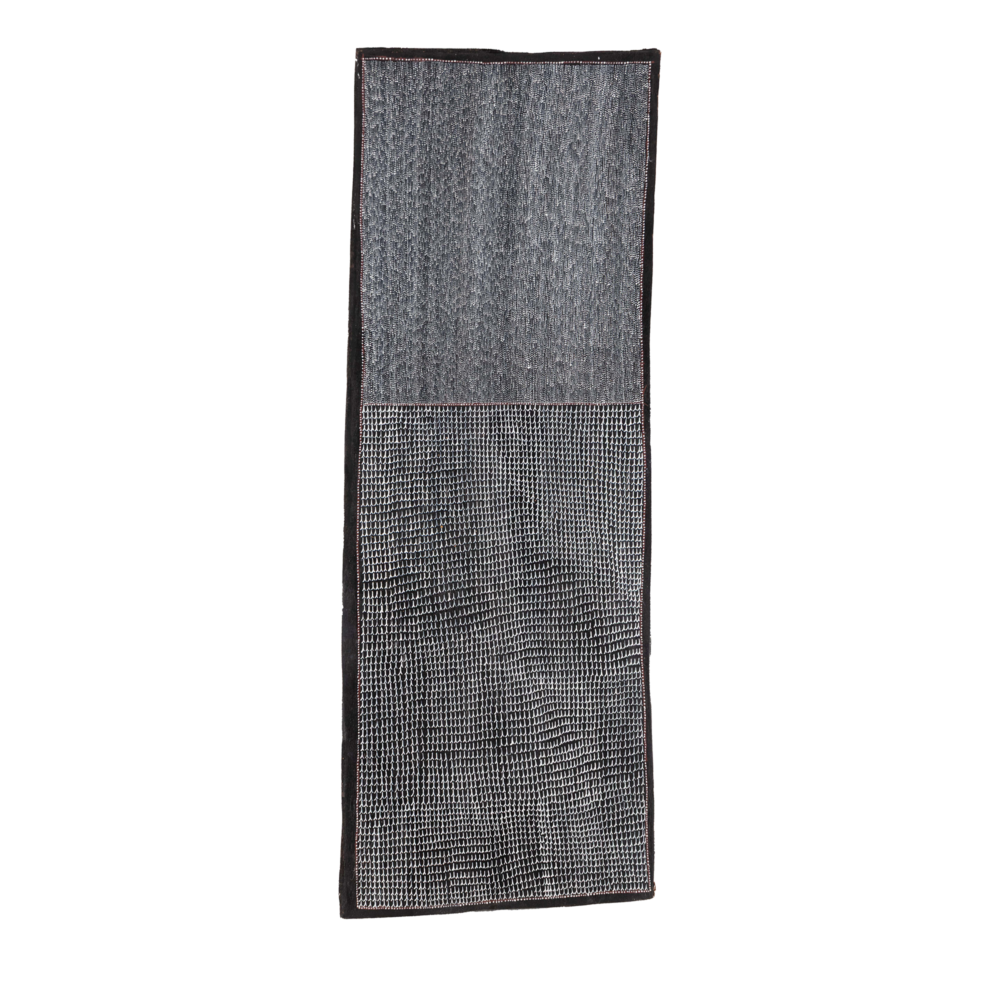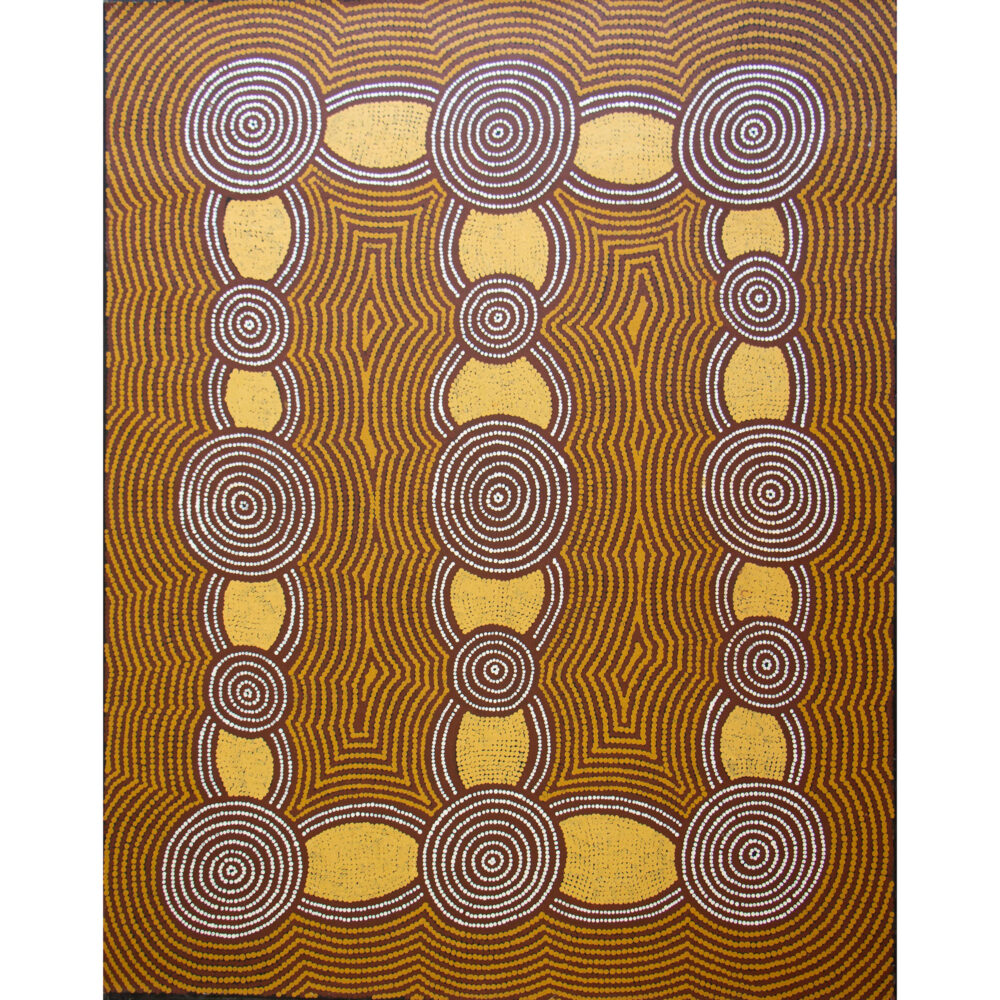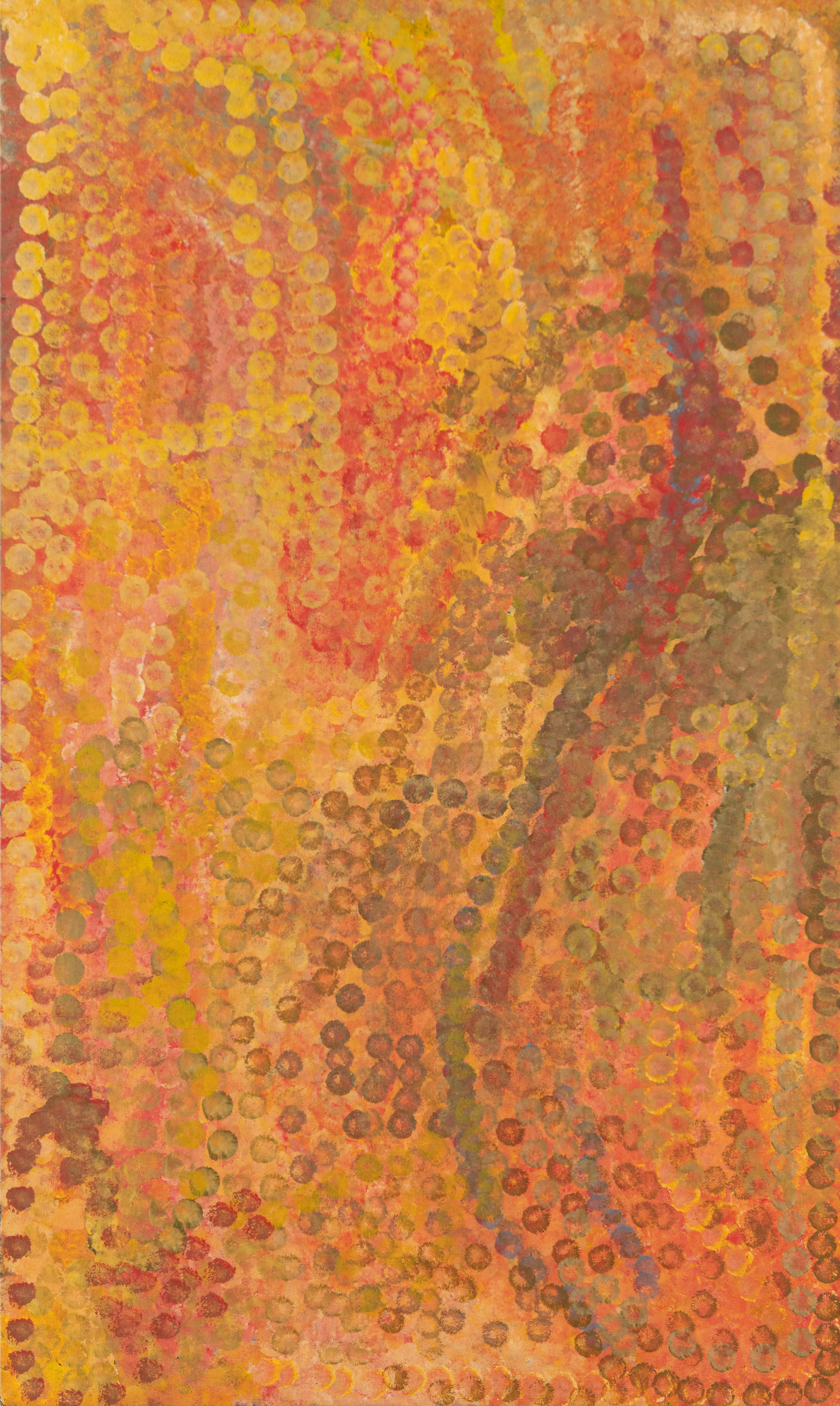
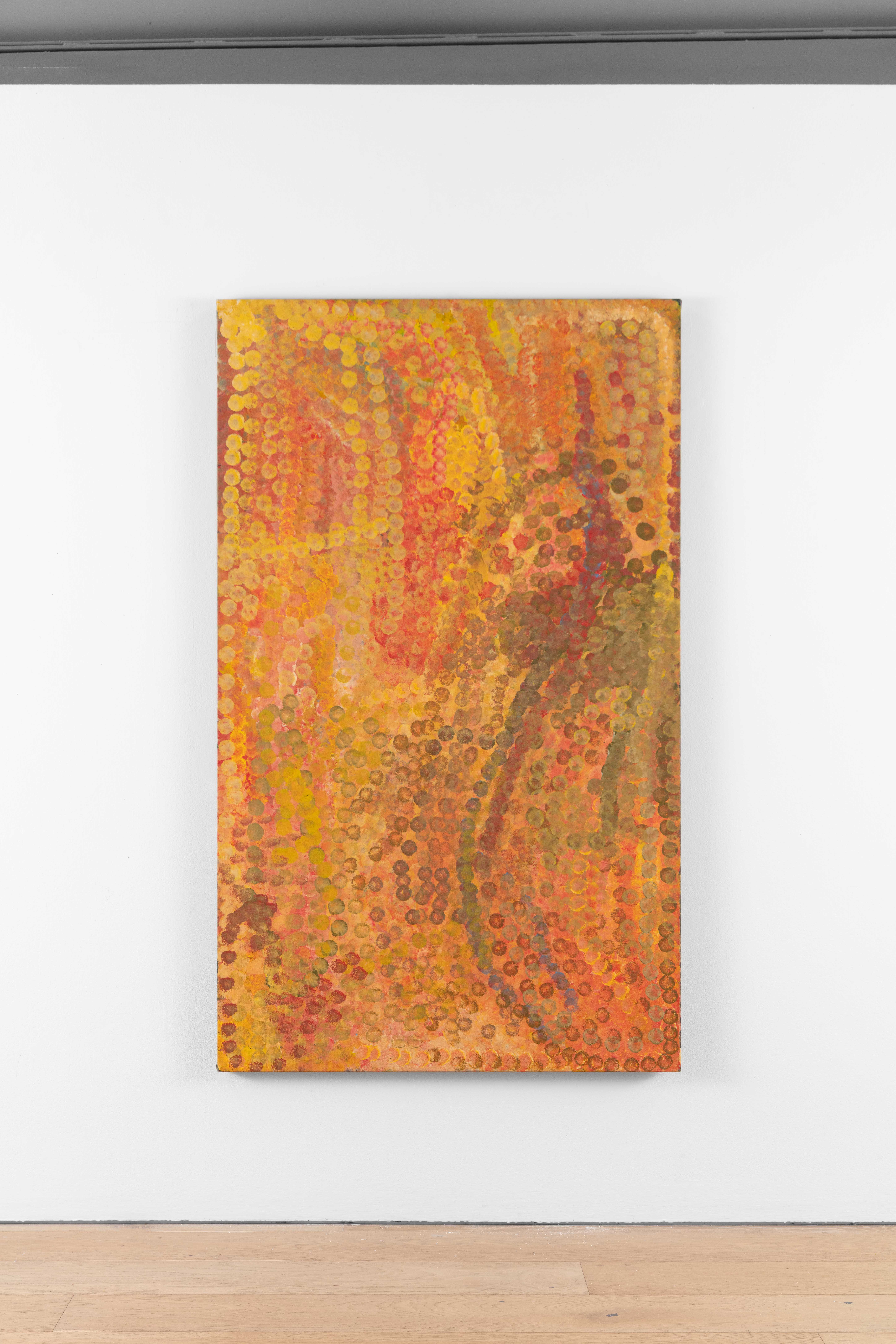
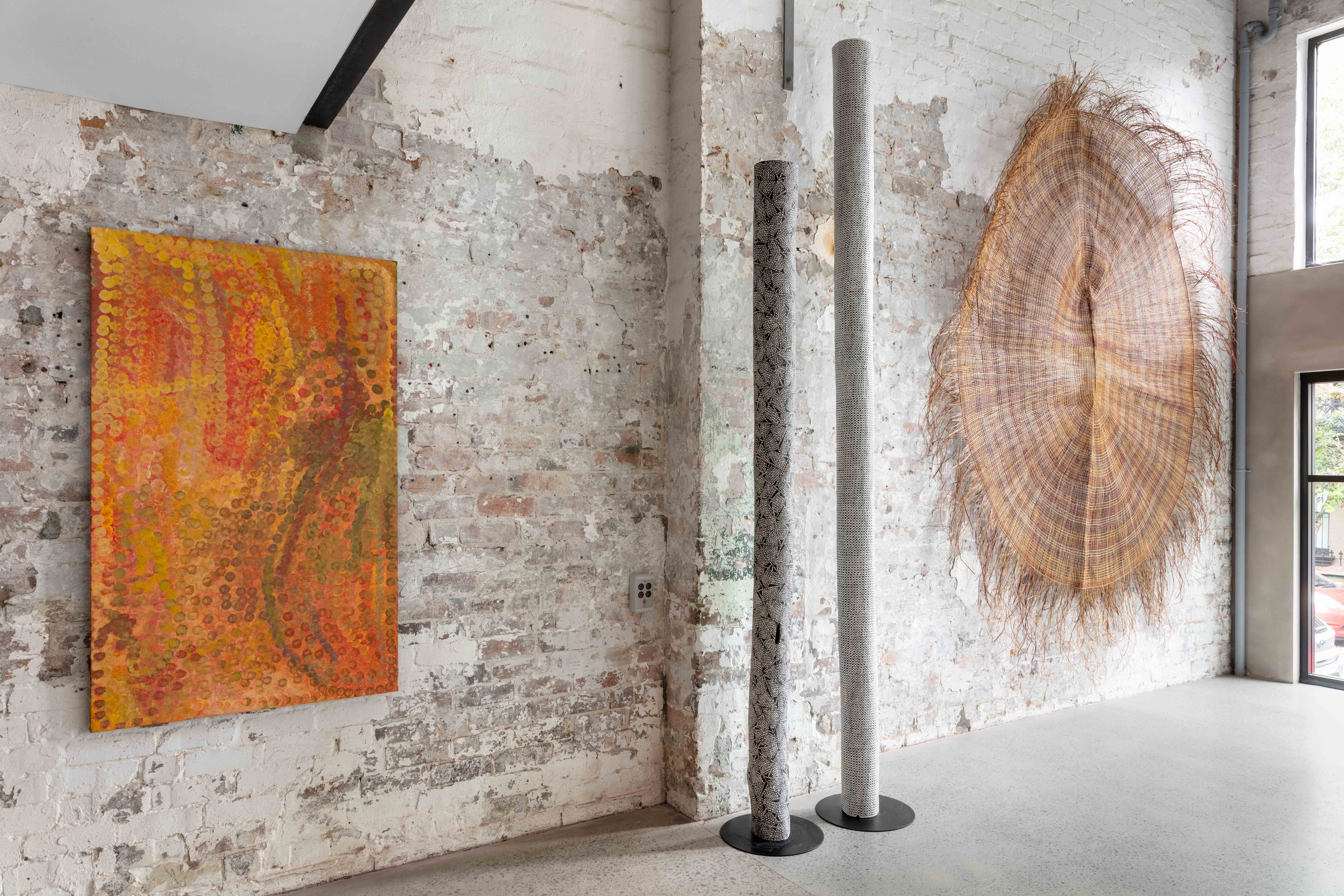
Renowned for her vivid use of colour, Kngwarray painted the desert country of Alhalkere, her birthplace and homeland on the western edge of Utopia. Living according to the traditions of the Eastern Anmatyerre, her works chart the seasonal changes of this environment, particularly the transformation after rain known as the “green time’1, when wildflowers and grasses flourished and provided essential foods.
In this painting, Kngwarray employs layered fields of dots to evoke the abundance of growth after rain and to reference Awelye, the women’s ceremonial body designs. The surface dissolves into chords of colour harmonies, achieved through the repeated build-up of paint. As Stephen Gilchrist has noted, such layering reflects a cultural worldview in which what is visible above ground is inseparable from the ancestral forces below.2
Kngwarray’s practice is regarded as one of the most significant contributions to modern Australian painting. Within less than a decade, she produced a body of work that redefined perceptions of Aboriginal art internationally, situating it within global dialogues of abstraction while remaining firmly grounded in her cultural knowledge and connection to country.
1. Isaacs, J., ‘Amatyerre Woman’ in Isaacs, et al., Emily Kam Knwarray Paintings, Craftsman House, Sydney, 1998, p. 13
2. Gilchrist, S., ‘I am Kam’, in Cole, K. et al., Emily Kam Knwarray, National Gallery of Australia, Canberra, 2023, p. 169
© Emily Kam Kngwarray/Copyright Agency, 2025
Untitled (Awelye), 1993
PROVENANCE
Commissioned by Delmore Gallery, via Alice Springs, Northern Territory, 1993
Chapman Gallery, Canberra
Private collection, Canberra, acquired from the above in 1996
Deutscher and Hackett: Important Australian Fine Art, lot 27 August 2025
Private collection, Sydney
$195,000
In stock
Renowned for her vivid use of colour, Kngwarray painted the desert country of Alhalkere, her birthplace and homeland on the western edge of Utopia. Living according to the traditions of the Eastern Anmatyerre, her works chart the seasonal changes of this environment, particularly the transformation after rain known as the “green time’1, when wildflowers and grasses flourished and provided essential foods.
In this painting, Kngwarray employs layered fields of dots to evoke the abundance of growth after rain and to reference Awelye, the women’s ceremonial body designs. The surface dissolves into chords of colour harmonies, achieved through the repeated build-up of paint. As Stephen Gilchrist has noted, such layering reflects a cultural worldview in which what is visible above ground is inseparable from the ancestral forces below.2
Kngwarray’s practice is regarded as one of the most significant contributions to modern Australian painting. Within less than a decade, she produced a body of work that redefined perceptions of Aboriginal art internationally, situating it within global dialogues of abstraction while remaining firmly grounded in her cultural knowledge and connection to country.
1. Isaacs, J., ‘Amatyerre Woman’ in Isaacs, et al., Emily Kam Knwarray Paintings, Craftsman House, Sydney, 1998, p. 13
2. Gilchrist, S., ‘I am Kam’, in Cole, K. et al., Emily Kam Knwarray, National Gallery of Australia, Canberra, 2023, p. 169
© Emily Kam Kngwarray/Copyright Agency, 2025


